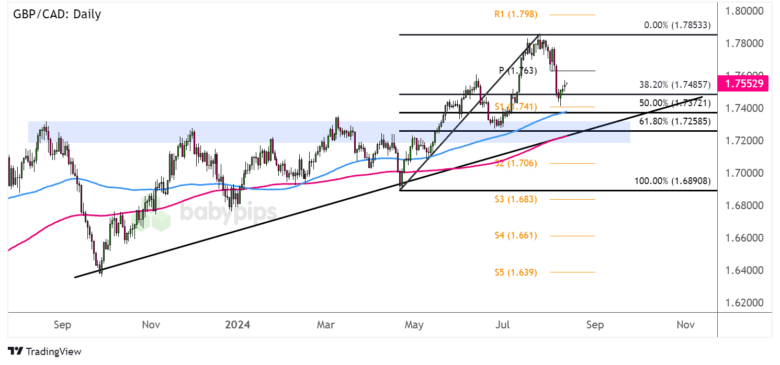This is How to Hedge Against Higher Geo-Economic Risks: Citi’s Strategic Insights
August 26, 2024 | by stockcoin.net


What strategies can investors adopt to safeguard their portfolios against escalating geo-economic risks?

🚨Get your crypto exchange secret bonus right now.🚨
Understanding Geo-Economic Risks
Geo-economic risks encompass a complex interplay of geopolitical tensions and economic uncertainties that can adversely affect global markets. The increasing volatility in international relations, alongside economic downturns, poses significant challenges for investors. Navigating these turbulent waters becomes essential for achieving robust financial outcomes.
The Role of the Geo-Economic Risk Premium Model
In response to the evolving landscape of global risks, Citi Research has refined its Geo-Economic Risk Premium (GRP) model. This model serves as a critical barometer for measuring the discount rate that impacts global equities due to geopolitical and economic risks. Recent adjustments to this model have indicated an alarming uptick in the GRP, signifying heightened investor caution amidst rising geopolitical tensions, particularly in regions like the Middle East and Eastern Europe.
The GRP model provides insights into how these risks manifest in financial markets and enables investors to make informed decisions. The analysts at Citi have noted that, as geopolitical uncertainties intensify—especially with pivotal events such as the U.S. presidential election looming—market participants must remain vigilant about potential fluctuations in stock valuations.
The Impact of Geopolitical and Economic Factors
The current global climate reveals a perplexing dichotomy: while the geopolitical risk index displays a downward trend, the economic policy uncertainty index, particularly in Europe, indicates a surge. Historical patterns suggest that such inconsistencies can foster an environment ripe for economic instability, thereby exacerbating the risks associated with investment portfolios.
In light of this, investors are urged to scrutinize the roots of these risks to better comprehend their ramifications on different market segments and asset classes.
Defensive Sectors: A Resilient Choice
Amidst increasing geo-economic challenges, some sectors showcase remarkable resilience. Defensive sectors, such as healthcare, consumer staples, and utilities, often experience steadier performance during turbulent times. Historical data supports the notion that equities within these sectors are more likely to maintain stability, even as broader market conditions deteriorate.
Investors seeking to weather the storm may want to shift a portion of their allocations towards these defensive sectors. This strategic adjustment not only provides a buffer against volatility but also positions portfolios to capitalize on enduring consumer demand, regardless of economic conditions.
The Influence of Country-Specific Risk Sensitivity
Investors must also consider geographical sensitivities to geo-economic risks when structuring their portfolios. Countries exhibit varying degrees of exposure to these factors, influencing their market stability and attractiveness to investors.
Switzerland: The Safe Haven
Scholarly assessments frequently position Switzerland as a model of resilience amid global economic upheaval. The country’s robust financial system, coupled with a history of political neutrality, establishes it as a safe haven for investors. This resilience manifests itself through strong financial metrics and a stable investment climate.
Spain and Italy: Vulnerability to Uncertainty
Conversely, nations such as Spain and Italy face heightened exposure to economic uncertainty. Economic indicators suggest that these countries may grapple more severely with the consequences of external shocks, thus increasing the risks associated with investments therein.
Germany and France: Geopolitical Exposure
Germany and France represent another layer of complexity, with substantial exposure to geopolitical risks that could exacerbate economic challenges. Investors must remain cognizant of how shifts in the broader global landscape could affect these key European economies.
The United Kingdom: A Nuanced Landscape
The UK presents a more nuanced scenario, entailing a mixed exposure to economic uncertainties and geopolitical risks. Analysts note that the energy sector may provide a degree of insulation against adverse economic conditions, encouraging investment in this arena. Therefore, understanding the specific vulnerabilities and opportunities inherent to each country becomes paramount to making savvy investment decisions.
The Critical Role of Company Size
In addition to geographical risks, the size of companies within investment portfolios plays a significant role in determining resilience to geo-economic turbulence. Historical trends demonstrate that large-cap stocks consistently outperform their mid-cap and small-cap counterparts during volatile periods.
Large-Cap Stocks as Defensive Bulwarks
The intrinsic stability associated with large-cap stocks stems from their established operational frameworks and diversified revenue streams. These companies typically possess ample resources to weather economic storms, making them an appealing choice for investors seeking security amidst uncertainty. Investors can benefit from the relative strength of these entities, allowing for a more stable investment environment.
Mid-Cap and Small-Cap Risks
In contrast, mid-cap and small-cap stocks often struggle during times of stress. Their more concentrated revenue streams and reliance on favorable market conditions can magnify losses in the face of external shocks. Investors must exercise caution when allocating funds to these segments during periods of heightened risk.
🚨Get your crypto exchange secret bonus right now.🚨
Strategic Adjustments to Hedge Against Risks
To effectively mitigate the impact of rising geo-economic risks, investors should consider implementing several strategic adjustments to their portfolios. These actions can help enhance overall resilience and lead to improved financial outcomes.
Allocate to Defensive Sectors
An effective initial step involves reallocating a greater share of investments toward defensive sectors, particularly healthcare, consumer staples, and utilities. Historical performance indicates that these sectors maintain a degree of stability during economic downturns and geopolitical uncertainties.
Investors, therefore, would be prudent to revise their allocations, reinforcing the defensive underpinnings of their portfolios.
Diversification into Stable Geographies
Another vital strategy centers around diversification into countries with lower exposure to geo-economic risks. Nations such as Switzerland and Japan are characterized by robust financial systems and political stability, rendering them attractive destinations for those seeking to minimize risk.
By strategically diversifying into these safer havens, investors can enhance the stability of their portfolios. This well-rounded approach provides a hedge against adverse market conditions while capitalizing on more favorable environments.
Emphasizing Large-Cap Stocks
Increasing allocations to large-cap stocks serves as an additional protective measure. The financial strength and diversification associated with major companies enable investors to navigate volatile markets more effectively. This upward trend of large-cap stocks offers a greater buffer against unexpected economic shocks.
Monitoring Economic and Geopolitical Indicators
Continuous monitoring of economic and geopolitical indicators is also essential for investors aiming to defy rising risks. Keeping track of critical metrics, such as the Economic Policy Uncertainty Index and the Global Geopolitical Risk Index, equips investors with insights essential for timely adjustments.
Understanding the origins and implications of economic uncertainty allows investors to make informed predictions about market behavior in response to new data.
Balancing Energy and Defensive Investments
While the energy sector has demonstrated resilience in the face of geopolitical risk, its performance may not sustain under economic downturns. Therefore, balancing energy investments with allocations to defensive sectors ensures a well-rounded risk management strategy.
By understanding the intricate relationship between different sectors and their impacts during various economic phases, investors can create a more cohesive investment strategy.
Conclusion
Addressing and mitigating geo-economic risks necessitates a multifaceted approach that encompasses various strategies and considerations. The refinement of Citi’s Geo-Economic Risk Premium model provides invaluable insight into navigating these turbulent waters, guiding investors toward a more secure financial landscape.
By allocating resources thoughtfully, diversifying portfolios, emphasizing stability through large-cap stocks, and maintaining vigilance with economic indicators, investors can position themselves adeptly in the face of mounting challenges.
In a world fraught with unpredictability, adopting a proactive stance rooted in strategic planning will serve as the cornerstone of resilient investment strategies. Achieving success in this complex environment hinges on the ability to adapt, understand risks on multiple levels, and make informed decisions that weather the storm of ongoing geopolitical and economic upheaval.
🚨Get your crypto exchange secret bonus right now.🚨

RELATED POSTS
View all



